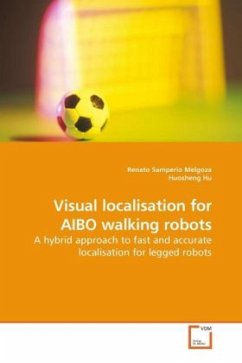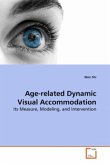In recent years, visually guided walking robots have been used to play football games in highly dynamic and noisy environments. This work describes a robot localisation system which employs robot perception in real-time to achieve more efficient and cost effective performance than existing methods. The approach advocated in this work develops a hybrid localisation method to obtain robot position and heading in general, and control of the robot, its environment and behaviour in particular. To achieve full control over robot interaction, an interactive human-robot interface is also described. The adaptability and scalability of the GUI is improved by making use of process requirements and software interfaces. Therefore, by increasing the adaptability of the human-robot interfaces allows easy modifications of hardware and software so that the system will operate robustly and efficiently. Both grid maps and positioning tracking methods are combined to overcome the challenge of multimodal and kidnapping problems. Finally, a comparative statistical analysis is employed to evaluate results of each implemented method to test the novelty localisation method in real world conditions.








